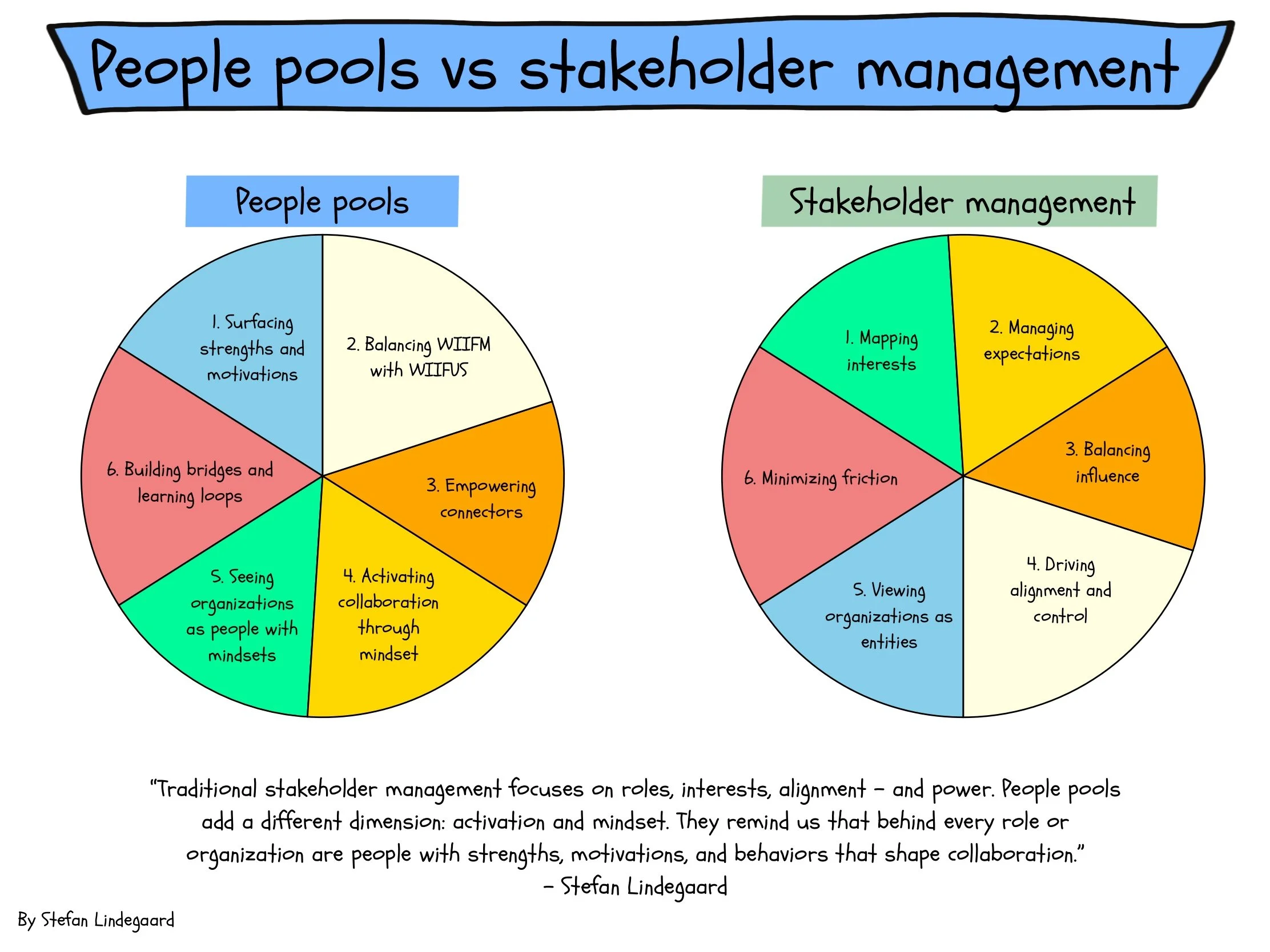People Pools: A Different Lens for Collaboration
Most organizations and networks talk about stakeholder management. That usually means mapping interests, aligning priorities, and balancing influence (and even power). Useful, yes - but limited.
With People Pools, I suggest a different lens. Instead of treating stakeholders as roles or entities to manage, we see them as groups of people with strengths, constraints, and motivations. And people show up with mindsets that shape how they collaborate.
So what do People Pools look like in practice?
• Startups and SMEs bringing agility and fresh ideas
• Corporates contributing scale and resources
• Investors scanning for opportunities and deal flow
• Universities and knowledge institutions adding talent and long-term perspective
• Municipalities and government shaping growth, jobs, and reputation
• Advisors, mentors, and hidden contributors (like nurses, data managers, or regulators) who often decide whether ideas succeed in practice
This matters for hubs, ecosystems, and networks. Innovation doesn’t flow because interests are mapped - it flows when diverse pools are activated, connected, and bridged.
Working with People Pools means:
• Surfacing what each pool brings (and what holds them back).
• Balancing WIIFM (what’s in it for me) with WIIFUS (what’s in it for us).
• Empowering connectors who move between pools.
• Building bridges and learning loops instead of silos.
Traditional stakeholder management is about alignment and control. People Pools are about activation and mindset.
That shift creates ecosystems where people don’t just sit in the same room - they actually learn, connect, and innovate together.
